
Tick Talk
[Vacheron Moderator]
2191

CHRONOMÈTRE ROYAL; Caramba! The Brazilian Connection
Tick Talk (c) 14 April 2020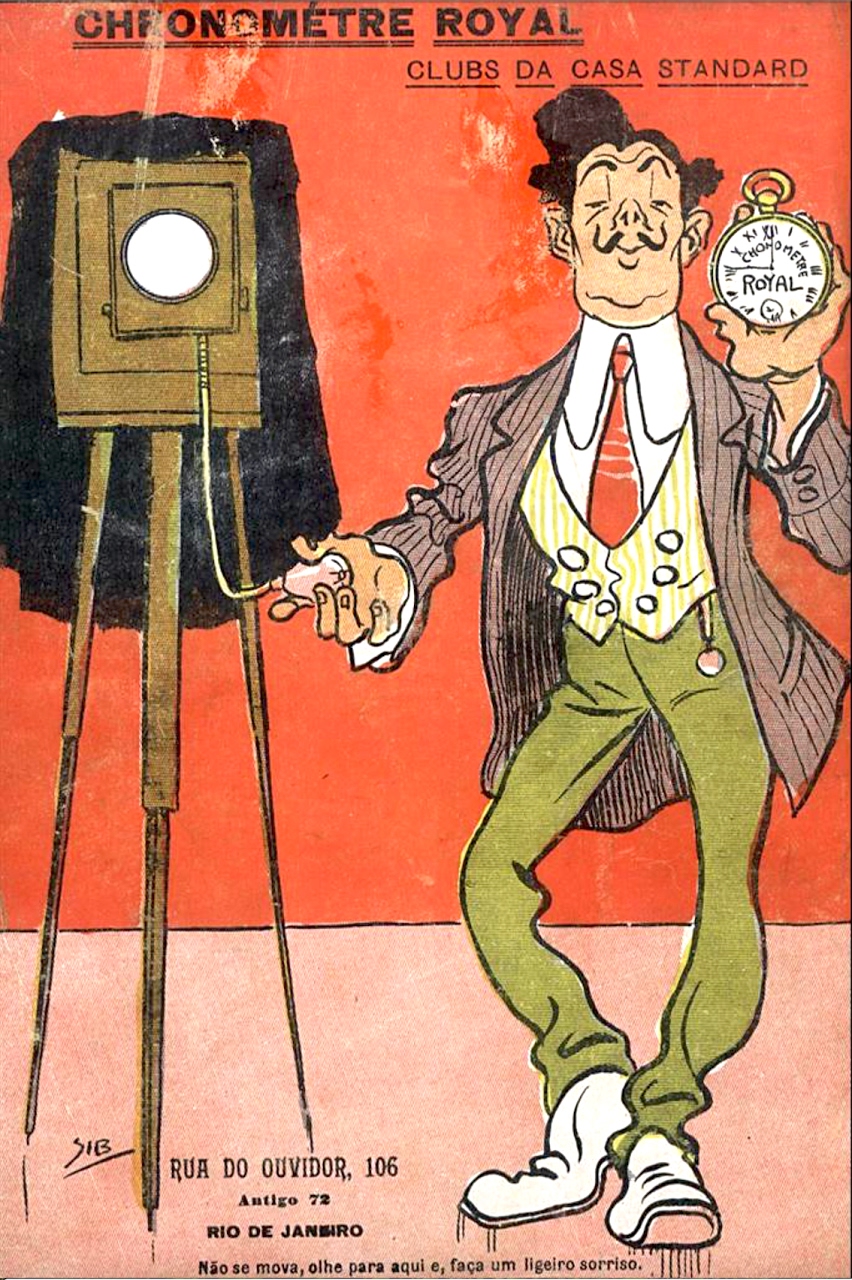
With time on my hands (what a delightful pun) I’ve been researching the history of Vacheron Constantin’s iconic Chronomètre Royal and it’s genesis in Brazil.
When the latest model was introduced in 2007, it was ostensibly to celebrate the line’s 100th anniversary. An article published on The Hour Lounge, appropriately titled; “Chronomètre Royal: 100 Years of Flamboyance”, shared a wealth of details. Here I’ll offer a brief excerpt:
"Building on its experience and reputation gained via numerous prizes, Vacheron Constantin decided to take the jump and actually create a precision timekeeper not only destined for competition but for actual use, consequently in 1907 the Chronomètre Royal was born. The name was filed for trademark on May 28 of the same year and on May 8, 1908 trade mark protection was filed for its English translation of Royal Chronometer.
With the push of fate this watch became an instant success and avidly sought after by the cognoscenti. The South American market was the first to pass orders. A letter dated April 17, 1907 from Campos in Rio de Janeiro shows the interest of this agent in a robust precision instrument."
This narrative became orthodoxy for those of us with a passion for this most senior branch of la famille Vacheron et Constantin, and motivated my research into the Brazilian connection.
But, is it possible the Chronomètre Royal had its inception at an earlier date? The question sprang to mind while I was combing through the archives of a Brazilian newspaper. An advertisement from 1903 presented a most astonishing contradiction.
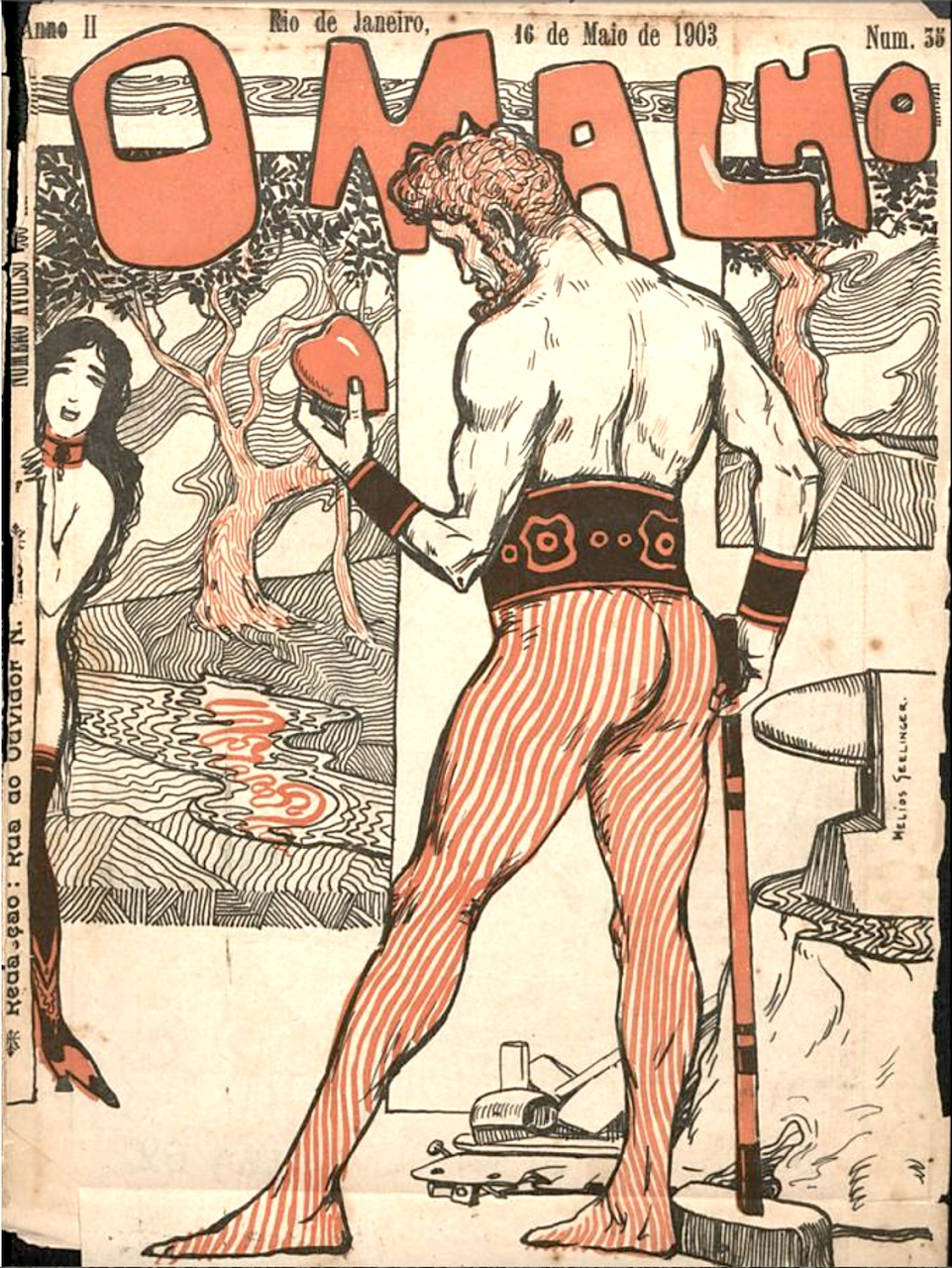
Allow me a brief digression to properly set the stage. Swiss watches weren’t unknown in South America at the turn of the 20th century. Vacheron & Constantin had, in fact, appointed J. P. Mottet and Felix Favre as its agents in Rio de Janeiro back in 1840 and its products were available at up-scale relojoaria alongside those of Omega, Patek Philippe, Lange & Sons, Waltham, Elgin and others.
Gondolo & Labouriau, an agent for Patek Philippe, had initiated a Buyer’s Club for watches from this Manufacture in 1902. These exceedingly popular merchandise clubs combined purchase through instalments with the chance to win your item through weekly lotteries. Patek Philippe provided unique watches to Gondolo & Labouriau’s clubs, with dials and cuvettes appropriately marked “CHRONOMETRO GONDOLO”.
A. Campos & Companhia of Rio de Janeiro were not relojoeiros, or watchmakers, like Gondolo & Labouriau. They were a large commercial house operating under the name Casa Standard, with an immense showroom alongside an even larger warehouse. Their organization involved import and export, brand agency and distribution, and an extensive array of buyer’s clubs. Through these clubs, Campos supplied such diverse items as pianos, shotguns, bicycles, automobiles, and typewriters. A system of agents in major centres across Brazil gave them a national presence with tens of thousands of participants.
No doubt casting an envious eye at the success of Gondolo & Labouriau’s clubs, Campos decided to add a prestigious Swiss watch to their portfolio. But when? The answer was found on page 34:
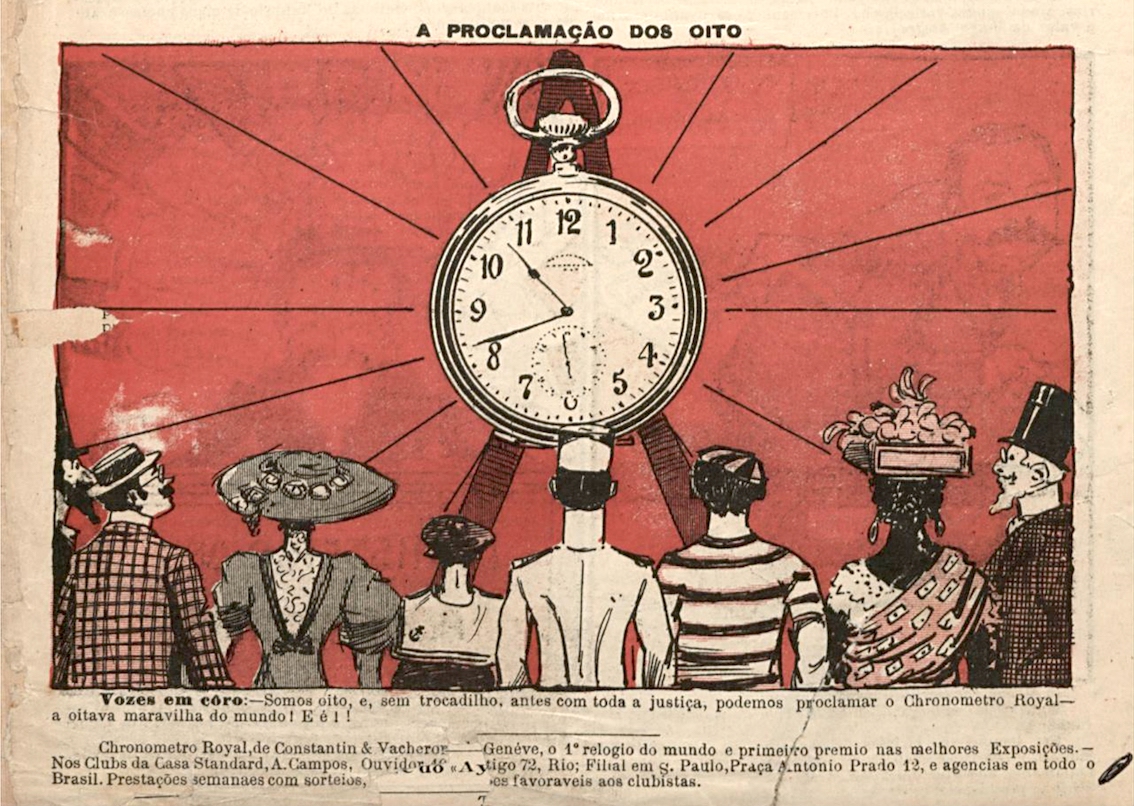
THE PROCLAMATION OF THE EIGHT
Chorus voices: - There are eight of us, and without pun, in all fairness, we can proclaim the Chronometro Royal - the eighth wonder of the world! And is !!
Chronometro Royal, by Constantin & Vacheron, Genève, the 1st watch in the world and first prize in the best Exhibitions. - In Casa Standard Clubs, A.Campos, Ouvidor 106, Antigo 72, Rio; Branch in S. Paulo, Praça Antonio Prado 12, and branches throughout Brazil. Weekly instalments with sweepstakes, ... favourable to club members.
This advertisement proclaims that the Chronometro Royal by Constantin & Vacheron Genève (the word “typo” was, after all, coined to describe typesetting errors) was available in the Clubs of Casa Standard. The distinctive Chronomètre Royal dial is instantly recognizable!
Deciding on Vacheron & Constantin as their answer to the Chronometro Gondolo was perhaps the easiest choice that Campos had to make. In my research I was struck by the interchangeability of “Chronomètre” and “Chronometro” in the advertisements of Casa Standard throughout the years. The etymology of the times was that chronomètre/chronometer/chronometro simply referenced precision watches. With their advertisements, Campos emphasized the word “ROYAL”, intending to invoke the seniority of V&C and its patronage by nobility. A further connection was suggested with the currency of Brazil; the real, a name derived from the Portuguese word for “royal”.
My theory is simple; that the Chronometro/Chronomètre Royal began as a private label offering from Vacheron & Constantin for A. Campos & C. at least as early as 1903, with the name and logo either suggested or designed by Campos themselves to suit the Brazilian market.
With registration of the trade name in 1907, Vacheron & Constantin took the line worldwide and expanded the range to include a tremendous variety of sizes and styles ranging from dignified to flamboyant. Clearly Campos was in agreement as they continued to offer a 22-ligne version through buyer’s clubs until their commercial empire crashed in 1915.
An advertisement isn’t a product, and the rightfully skeptical might wonder; where is the proof that Chronomètre Royal watches were manufactured before 1907? Perhaps this is the smoking gun; a 2002 auction listing from Antiquorum for a Chronomètre Royal watch completed in November of 1906:
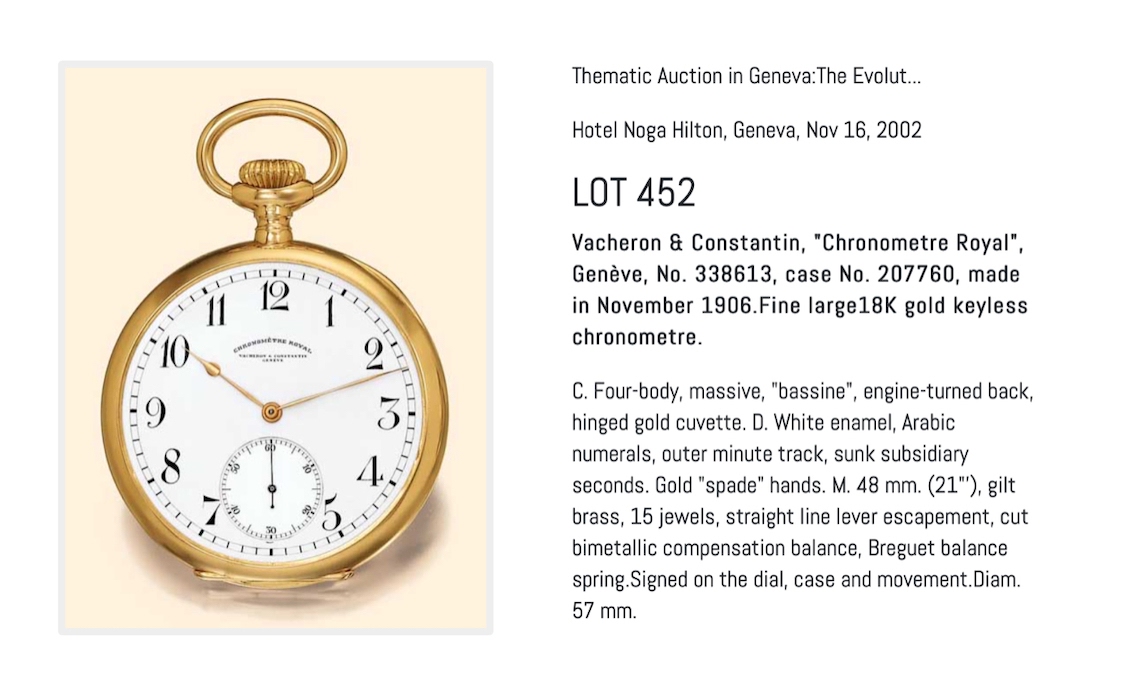
The serial numbers agree with that date. According to 100 Years of Flamboyance, precisely 3,022 Chronomètre Royal watches were delivered to A. Campos from 1907 to 1911. In a full page advertisement taken out to celebrate the opening of a larger showroom in April of 1911, Campos themselves claimed to have distributed 5,800 “chronometros ROYAL”, leaving 2,778 watches unaccounted for.
The fall of Casa Standard occurred during an economic crisis in Brazil which produced severe currency devaluation. Many of those gold watch cases may have offered salvation to their owners when scrapped; the sad but often-repeated fate of luxury watches, with unfortunatel consequences for l’archéologie de horlogère.
End of Part I
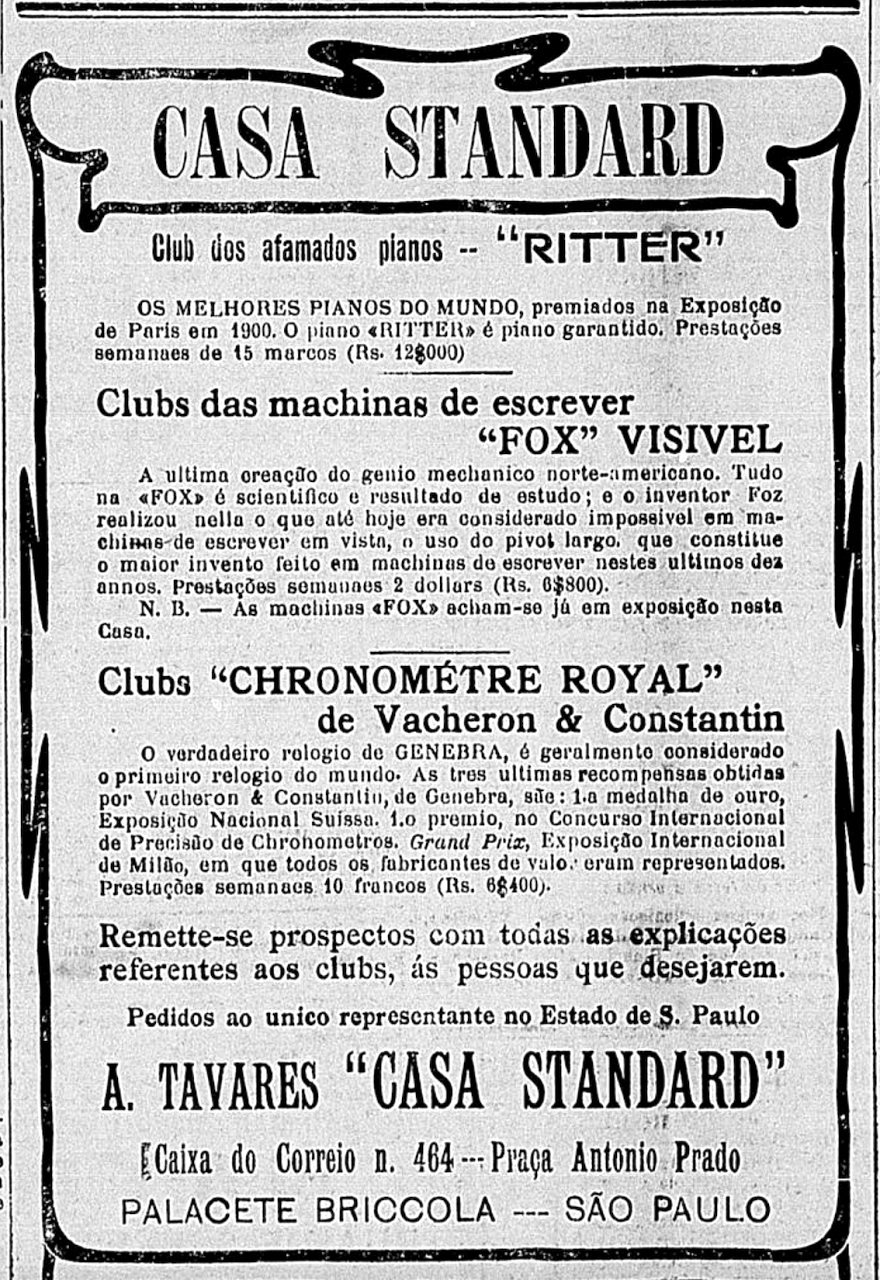
This message has been edited by FabR on 2020-04-16 17:03:01

CHRONOMÈTRE ROYAL; Caramba! The Brazilian Connection





Thank you for this very interesting article!




Oops, a typo...

Another pre-1907 Chronometre Royal!
That one seemed a little strange
We might have two Chrometre royal

another non-typical CR

Finally found this article!


